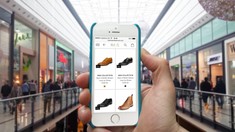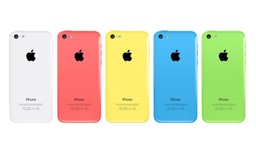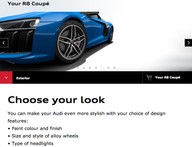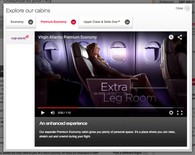8 Ways to convert high value purchases online

Understanding your customer journey is key to success. However, with an increasing number of touchpoints, understanding your audience is getting more and more difficult. It’s critical to know not just their interests and opinions, but also their habits, behaviours and interaction points in both the online and offline worlds. With big ticket items, such as expensive holidays and luxury cars, the customer journey is even more complex to comprehend. Consumers decisions on these items are processed differently to lower value items, people take more time over the decision, compare more alternatives and refer to many trusted sources for advice, but how do they make a decision? Do these sources really make a difference? What psychological tips and tricks can you employ to sell big ticket items to consumers?
Why are high ticket purchase decisions different?
Unlike lower value items, high cost purchases are more risky purchases for a number of reasons:
- High price. They cost more so it takes more time to save up and pay for the item, consumers want to make sure their hard earned money is not wasted on a bad decision.
- High risk. When it comes to experience purchases such as the annual family holiday or a honeymoon, there is a great deal of pressure on the person booking to ensure the experience is memorable and that everyone has a great time.
- Longevity. A car will be something that’s used daily, for a number of hours and will remain in their life for a number of years.
68 days is the average time it takes users to research high ticket purchases
The fragmented but shortening customer journey
The customer journey in the digital era is no longer linear. With the rise of digital technologies and the connectedness that typifies the shopping experience, the costumer decision making process has become more fragmented.
However, the customer journey is also showing signs of shortening for high price items. Research over the last few years shows that consumers may be becoming more decisive. This may be because evidence indicates they are researching much earlier and spending much longer in this stage of the process. From 2013 to 2015, the average time taken in the research phase decreased by 14% for high cost purchases, from 79 days to 68 days (GE Capital Retail Bank and Synchrony Financial).
User experience in the digital world is no doubt contributing to this shortening timeline. The more that digital experiences, such as websites and apps, are designed around user needs, the more likely it is that the customer’s questions and concerns are answered and they’ll more likely reach the moment of truth. The key is ensuring that your website is the one to do this so that you keep the customer in your website as opposed to them going back to Google and a competitor to meet their needs. You need to identify and prevent all those barriers that can make people bounce, and work to actively keep them engaged with your product.
Rational and irrational decision making
“95% of our decisions are emotional, and 5% are rational. So even with all of these touch points we tend to go with our gut.” (Kahneman)
In the decision making process we think we are being very rational, researching the product, collecting information, comparing what’s included and prices, reading reviews, looking at photos and watching videos… but unbeknownst to consumers, their final decision to purchase is driven by emotions (irrational).
M.Talks of Ignition One states “We may be getting more decisive, but it doesn’t mean we’re getting any more loyal. Perhaps we’re just using all the information to filter down to a decision, but it’s still going to be an emotional decision. We’re not going to be any more [rational] about it… with some items we’re going to look at all the facts a bit more, but we’re still going to go with our emotional reaction to things. When it comes to marketing, it’s all about how you feel. If you don’t feel towards a certain brand, then you don’t want anything to do with it. You want to make sure you’re playing up all of your marketing campaigns to play into those emotions. The thing about the big-ticket items where you have to make a big financial commitment is that naturally, you want to make more time about that decision and have as many opportunities to verify your decision as possible. But our decisions are mostly driven by emotion rather than rational thought.”
Still likely to purchase in-store, despite their increased use of digital
88% are likely to purchase a high priced item in-store, not online. So, despite the increased use of digital throughout the customer journey, the final transaction is mostly still being made in a physical store.
8 ways to convert high ticket consumers online
1. Focus on mobile customer experience
With 50% of consumers using their mobile at some point during the research and purchase of a high ticket item, it’s more important than ever to focus on your mobile customer experience. Mobile is by far the most difficult platform for brands to get right due to the small screen space, so it’s worthwhile investing in expert help to focus on analysing your online user experience, identifying barriers and opportunities to engage and convert your consumers.
2 Limit choice
The potential for your consumers suffering from the paradox of choice increases the more options you give them and the less likely they are to make a choice. And when they do finally make a choice they’ll be less satisfied with it – this is called Buyers Remorse. This is what happens when you book your holiday then a week later see a better deal that you wish you’d booked instead.
3 Have a clear call to action on each page
It’s important for you to guide your customer when they’re on your website. Have one clear call to action button for each page. If you need other buttons, make these secondary buttons by decreasing their visual appearance and enhancing the appearance of the primary button to clearly stand out on the page.
4 Use video
High consideration purchases are driven by emotions. “The richer the emotional content of a brand’s mental representation, the more likely the consumer will be a loyal user.” (Psychology Today). The best way for you to communicate emotion is through video.
5 Personalisation
People want to feel that their purchase is unique, tailored on their needs, something that makes them proud to show and tell others about. People enjoy the fun aspect of personalising their product to their needs. It’s an external reflection of themselves. It also enhances their commitment and likelihood to purchase – personalisation can deliver 5-10 times the ROI on marketing spend and increase sales by 10% or more (McKinsey, 2013).
6 Post purchase experience
The final purchase decision, especially for expensive purchases can be followed by buyers remorse; Have I made the right decision? Is it the best product? Buyer’s remorse (or buyer’s regret) is the sense of regret a person feels after having made a purchase. It is frequently associated with expensive items or when when customers have made a choice from many different options. A feeling of self-doubt and remorse can emerge after the purchase process. To lessen the risk of buyers remorse, keep in touch with the customer after their purchase, reassuring them of the good decision they made to buy their product and the benefits it’s going to bring them. They will become a loyal customer. Also this goes without saying but ensure you send reminders to them to leave a review!
7 Giving meaningful context
Give context to your customers experience, make your product come alive in their eyes, giving meanings that are relevant and timely for them. In a study, international travellers were asked ‘How much would you pay for insurance that pays $100,000 in case of death for any reason?’ versus ‘How much would you pay for insurance that pays $100,000 in case of death in terror incident?’. Travellers were willing to pay more in the second condition because of the time and context (the unfortunate questions were asked during a period in which the risk of terror attacks was high).
8 Utilise Virtual Reality
To give customers the experience before purchasing. Car makers such as Audi are offering consumers virtual test drives that enable consumers to test drive their cars without the need to visit a showroom. This approach disrupts the standard customer journey of research then test drive, as consumers can fast track straight to the test drive before doing their research. Once consumers finally go for their real test drive it will feel like a familiar experience and remove some of the friction, resulting in a higher chance of purchase. Fashion retailers are already looking at how VR could help to ease changing room friction and queues and utilising technology such as smart mirrors.







